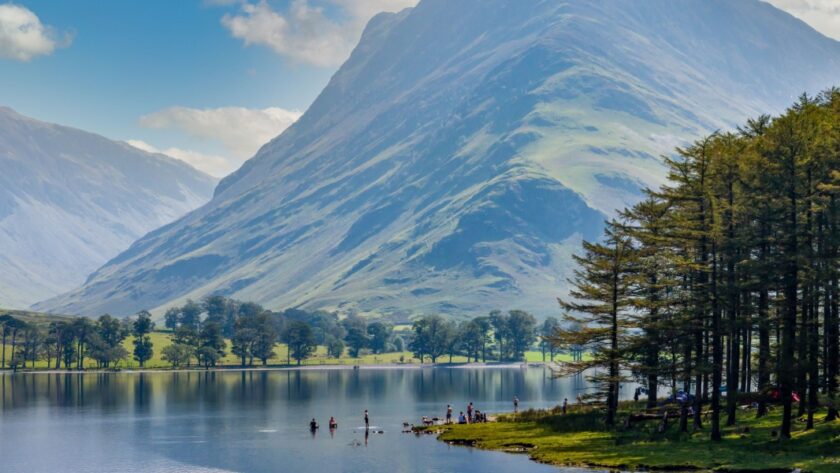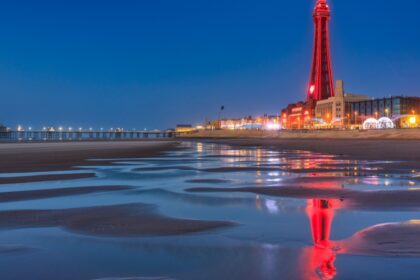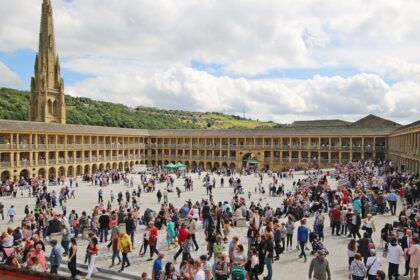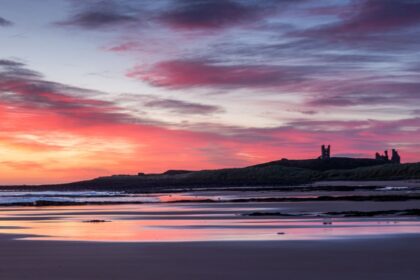If you head up to the northwest corner of England, eventually you find yourself in Cumbria, where the scenery suddenly becomes rather dramatic. Mountains loom, lakes sparkle, sheep look faintly unimpressed, and the whole place feels like a giant postcard left casually lying around. This is the Lake District, of course, but Cumbria is rather more than just lakes. It is hills, fells, coastlines, and plenty of places where the weather changes its mind every ten minutes.
For generations, Cumbria has been a place where poets, painters and ramblers come to stare at the views and feel inspired, or at least nicely tired from the walking.
The lakes that made the name
The Lake District, taking up most of central Cumbria, is England’s most famous national park and a UNESCO World Heritage Site, which is a fancy way of saying it looks very nice and people the world over have noticed. Lakes with names like Windermere, Ullswater, Derwentwater and Coniston Water sit beneath mountains that sound faintly dramatic: Scafell Pike, Helvellyn, Blencathra.
Walking here ranges from gentle strolls to breathless scrambles, often accompanied by small dogs wearing tiny raincoats and owners pretending they are not lost.
Poets, painters and a bit of Peter Rabbit
Cumbria has inspired quite a few famous names over the years. William Wordsworth lived here and wrote extensively about daffodils, wandering lonely and the general splendour of the scenery. His former homes at Grasmere and Rydal Mount are now open to visitors, should you wish to inspect where poetry was composed over tea.
Beatrix Potter, meanwhile, found both inspiration and sanctuary here, her charming children’s stories forever linked to the local countryside. She also became a respected sheep farmer, which is not a line found on many author biographies.
Artists like J.M.W. Turner and Ruskin found the landscape irresistible, and it continues to pull in painters, photographers and people with Instagram accounts.
Castles, Romans and old stones
Cumbria’s history is not all gentle poetry and talking rabbits. The Romans left their mark here too, most famously with Hadrian’s Wall, which slices across the county’s northern edge. You can still walk long sections, accompanied by the occasional sheep and plenty of sky.
There are castles too, such as Muncaster, Lowther and Carlisle, which spent much of its time deciding whether it belonged to England or Scotland, depending on who was invading that week.
Ancient stone circles like Castlerigg stand quietly on their hillsides, slightly mysterious and very photogenic.
Coastlines, ports and the edge of England
While the Lake District steals most of the attention, Cumbria’s coastline has its own charms. Seaside towns like Whitehaven and Maryport once thrived on shipping and fishing. Ravenglass sits quietly where the mountains meet the sea, with its tiny heritage railway puffing inland like something from a model village.
Further south, Barrow-in-Furness remains a centre for shipbuilding, although these days the ships tend to spend more time underwater.
Where silence has its own sound
But for many, Cumbria’s magic lies in its quieter corners. A solitary walk along a misty fell. A lakeshore at dawn when the water lies like glass. A stone bridge over a tumbling beck, with no sound but the sheep and your own footsteps.
Cumbria does not shout for attention. It simply waits, knowing you will eventually stop and stare.





